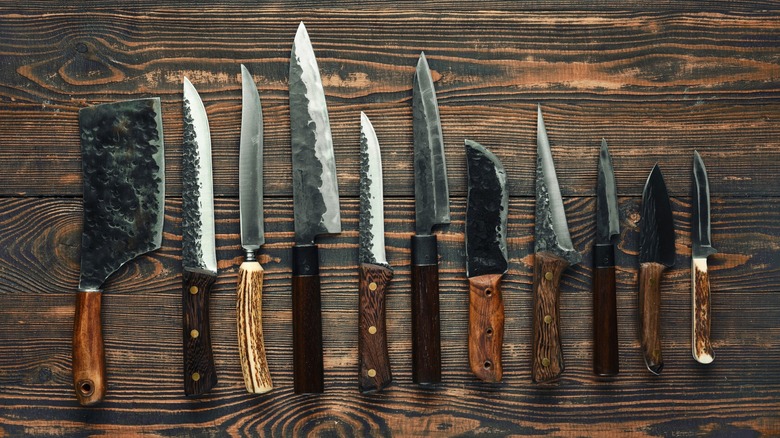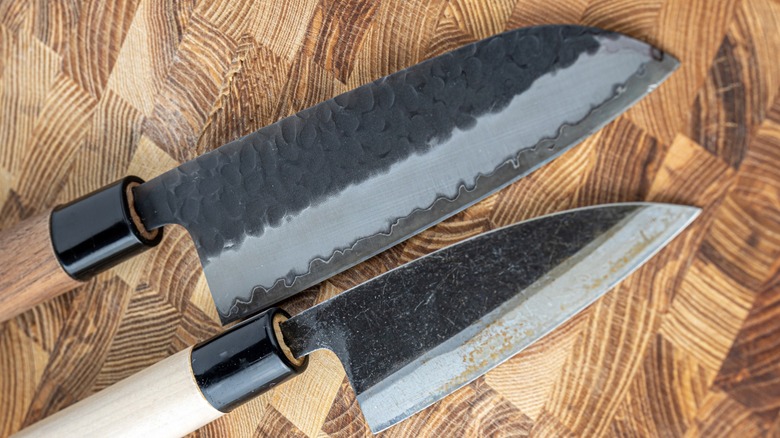New To Cooking? Avoid This Finicky Knife (At First)
Every journey begins with a single step, and if you are new to cooking, that could mean purchasing the one tool everyone needs to make magic happen in the kitchen — a quality knife. While it may sound like a simple task, choosing between the plethora of knives available can be a nightmare for folks who don't know much about blades. Do you go with efficient German engineering or the Japanese knives that chefs often prefer? Full tang or partial tang? Which brands are first-rate, and of course, what material would be best suited for someone unaccustomed to using a cooking knife regularly?
Timo Horl, the founder and CEO of knife sharpener brand HORL, answered a few of these questions. While he allowed for personal preference, he did note that, as far as the material, kitchen newbies should avoid carbon steel because of two primary features. "First, carbon steel is a hard metal. This allows you to create a very fine edge when sharpening, but a finer edge is also more susceptible to micro-chipping when it experiences 'point loads' — when a strong force is applied to a small area, such as using the knife for chipping ice or chopping hard bacon," Horl said. "Therefore, carbon steel knives require more careful handling."
Besides the potential chipping of delicate blades, carbon steel requires the type of maintenance that newer home chefs might easily overlook. "Second, carbon steel is more reactive than stainless steel and may develop rust if not properly washed and thoroughly dried," Horl said. "After use, it should be rinsed with water right away — especially if it was used to cut acidic foods like apples or lemons."
Graduating to cooking with a carbon steel knife
Once you've been around the (butcher) block a few times and polished your knife skills — perfecting the best knife grip for slicing and understanding what the honing rod in your knife block is really for — Tim Horl pointed out the advantages to using a carbon steel blade when cooking. "Professional chefs who prefer carbon steel knives appreciate the unique properties and advantages this material offers," he said. "Carbon steel has a very fine grain structure, which affects both its corrosion resistance and stability. As a result, it can be ground very thin and maintain its sharpness longer."
But, just like stainless steel, carbon steel knives come in many forms. Horl mentioned two that tend to be the workhorses in a kitchen, yet are also accommodating to beginners. "The Western chef's knife or its Asian counterpart, the santoku, are excellent all-purpose knives for new home cooks that are used in both everyday households and haute cuisine kitchens," he said. "However, it's important to choose a knife that feels right for you."
When deciding between the two, Horl mentioned that it's good to take a breath and focus on the most important factors. "Don't get overwhelmed by the types of steel and specifications," he said. "The two things that truly matter are hardness — which defines the knife's use — and how it feels in your hand." Of course, once you make your purchase, avoid the number one mistake that is sure to degrade any knife. Horl said, "As with all kitchen knives: never put it in the dishwasher!"

